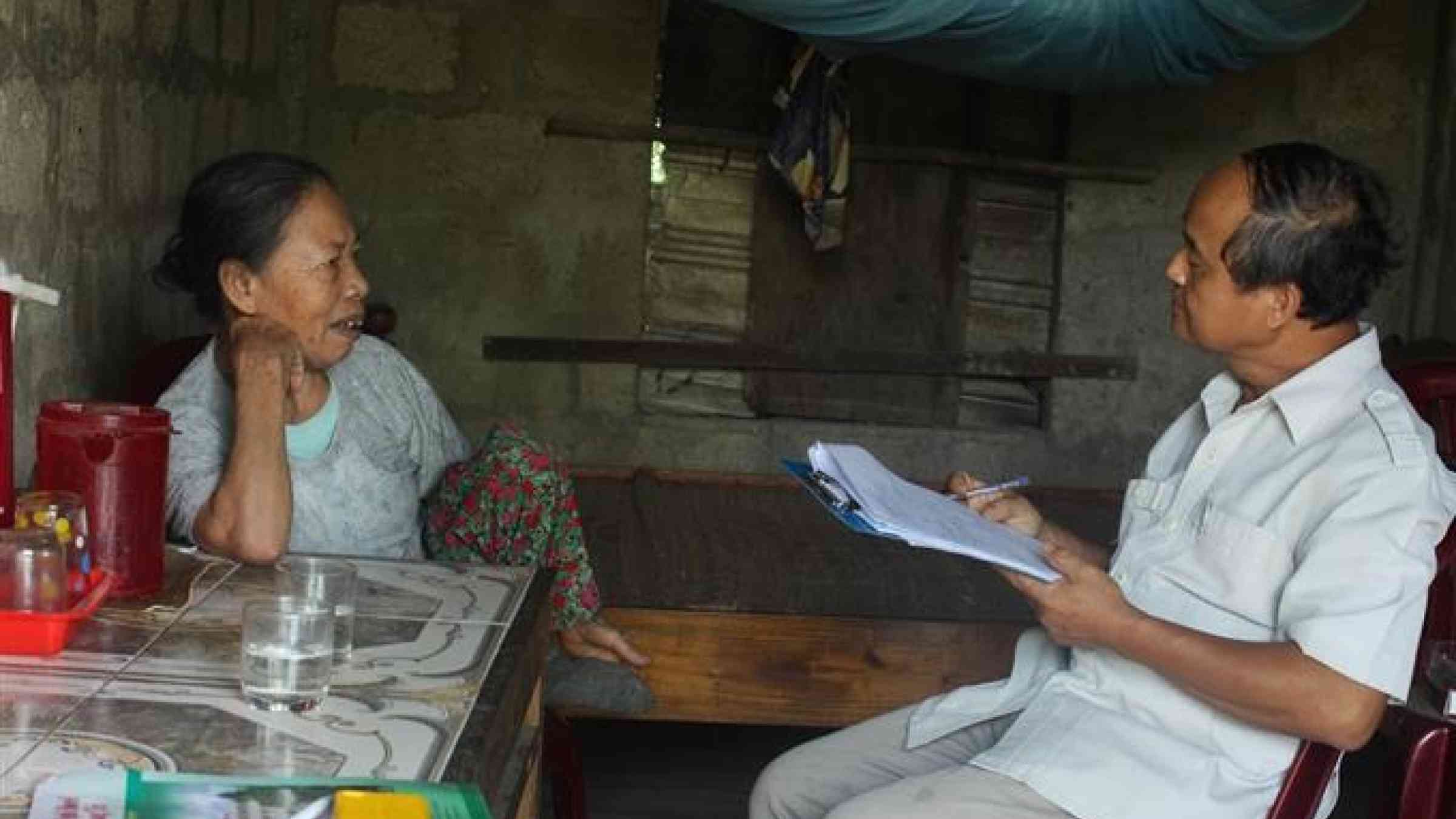Please help us improve PreventionWeb by taking this brief survey. Your input will allow us to better serve the needs of the DRR community.
Striking facts about the knowledge, attitude and practice regarding disaster risk management in some disaster prone areas in Vietnam

Photo by Malteser International
As part of the project “Widening the participation of people with disabilities in community-based disaster risk management (CBDRM)”, a survey was carried out from 10th to 14th May 2016 in four rural communes in Vietnam, namely Hanh Nhan and Hanh Duc in Quang Ngai province, and Cam Thuy and Cam Hieu in Quang Tri province, to assess the knowledge, attitude and practice (KAP) of local people regarding CBDRM. The survey was a collective effort of Malteser International, Quang Tri Disabled People’s Organization, National Disaster Management Center and Quang Ngai Department of Labor, Invalids and Social Affairs.
351 people representing 7,075 households across the four communes were interviewed face-to-face by 13 previously trained officers from different national and localdisaster risk reduction and disability organizations. Although since 2009, a nationwide project called “Community-based disaster risk management” (also known as Project 1002) is implemented, yet the KAP survey has revealed some remarkable findings about CBDRM:
- Two-thirds of the interviewees said they had never heard of, or had no idea about disaster risk management (87%) and community-based disaster risk assessment (77%).
- 36% of the interviewees hesitated or refused to include representatives of people with disabilities in disaster risk management (DRM) committees in their villages. They argued that people with disabilities would either be incapable of handling the tasks in these committees, or find this type of activity too demanding to cope with. However, 81% of the 40 disabled participants suggested that people with disabilities should be able to join as members of village DRM committees in order to overcome their feelings of inferiority, put their skills to good use and advocate for their needs during natural disasters to be included in the planning of CBDRM.
- Although 95% of the interviewees deemed CBDRM planning very important, 75% of them admitted not having joined in this activity. The main reasons given were not being invited (42%), not thinking it was their business to develop the plan (52%), not having anything to contribute to the discussions at planning meetings, and not being able to find time to attend meetings.
The four communes are all located in flood-prone areas and frequently affected by different kinds of natural disasters. The survey results ultimately reveal that the knowledge, attitude and practice of local people, including people with disabilities, regarding CBDRM require special attention. The expectation of local people with disabilities of having their representatives in the village DRM committees is reasonable. In the coming project activities, the stakeholders will identify the presence of the local disabled people’s organizations and evaluate their capacity to propose suitable solution.
As the result, the upcoming communication campaign of the project will focus on mobilizing local people and vulnerable groups to participate in CBDRM activities. Besides, more effective solutions to empower local people to create positive changes to disaster risk management in their community will be developed and selected through various project activities within the next two years.
Explore further
Please note: Content is displayed as last posted by a PreventionWeb community member or editor. The views expressed therein are not necessarily those of UNDRR, PreventionWeb, or its sponsors. See our terms of use
Is this page useful?
Yes No Report an issue on this pageThank you. If you have 2 minutes, we would benefit from additional feedback (link opens in a new window).